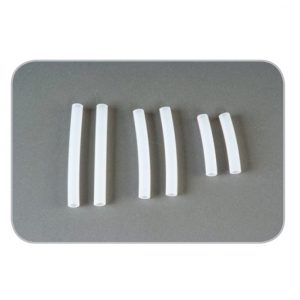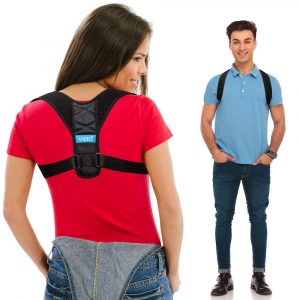Ligament Knee Brace
$24.99
This is a knee brace for torn ligaments. Award winning design offers functional rehabilitation of anterior and posterior cruciate ligament tears (ACL & PCL), injuries to the collateral ligaments (MCL & ACL), or surgery to the capsular ligament or meniscus, ligamentous or degenerative instability and hyperextension prevention.
Wearing a good functional knee brace early on after an operation permits earlier mobilization from increased perception of stability, allowing a safer restoration to full loading and better return to normal daily activities and return to work.
Prices & Offers Subject To Change
Ligament Knee Brace For Better Support From Healing After Surgery Or Conservative Treatment
A special ligament knee brace for functional treatment of injuries to cruciate ligaments (ACL/PCL) for stabilization & motion limitation option. Design and function come together in an award winning design to make this custom knee brace with a rigid frame, offering a rehabilitation device that is not only effective, but visually appealing as well as a great amount of wearer comfort and adjustability.
Indications For Ligament Knee Brace Support
- For use after injury or surgical repair of the ACL, PCL, MCL, or LCL
- For conservative pre and post-operative knee joint stabilization
- For conservative therapy of chronic knee ligament instabilities
This is the best knee brace for torn ligaments. Offers functional rehabilitation of anterior and posterior cruciate ligament tears (ACL & PCL), injuries to the collateral ligaments (MCL & ACL), or surgery to the capsular ligament or meniscus, ligamentous or degenerative instability and hyperextension prevention.
Wearing a good functional knee brace early on after an operation permits earlier mobilization from increased perception of stability, allowing a safer restoration to full loading and better return to normal daily activities and return to work.
Individuals who undergo ACl tear reconstruction have a high incidence of postural control deficits and re-tearing of the ligament occurs in almost 25% of patients. Functional knee braces are best used to help maintain optimal balance and reduce chances of re-injury by providing mechanical support. It is also possible that support enhances nerve function to increase joint position sense. Through this mechanism, those who experienced ACL tear reconstruction maintain optimum balance ability and decrease the future risk of ACL tears.

A study in the 2012 journal of Knee Surgery, Sports Traumatology & Arthroscopy investigated the effect of a functional knee brace on ground reaction forces. The authors found significantly lower ground reaction force using the brace, indicating prevention of traumatic forces and protection of knee joint ligaments.
A 2012 study in the International Journal of Sports Medicine found a significant reduction in laxity of the knee from 14 to 33% and improved balance for those with ACL rupture using a brace, compared with those not using a brace.
A 2013 study in the Clinical Journal of Sport Medicine found that bracing decreases excessive rotation of the tibia in patients with a deficient ACL in high demand activities. The authors indicated enhanced rotational stability of the knee and postulated an important role for functional bracing in the prevention of further knee pathology.
Ease Of Use
The ligament knee brace is very easy to put on and take off. With frontal contact, you don’t slide into the brace; just place it over your leg and fasten the closures.
Benefits:
Medically designed to aid in recovery and during rehabilitation following trauma, surgery or ligament injuries. It utilizes a two point geared hinge system on either side to aid in the control of flexion and extension while helping reduce both medial and lateral instability.
Knee Joint Stabilization and Injury Protection
The hinged knee brace helps reduce knee pain after surgery, as well as strains and arthritic symptoms, providing maximum protection to weak or injured MCL, ACL, and PCL ligaments, while reducing the risk of re-injury with exercise or loading.
Enhanced Circulation and Speeding Recovery
The thick therapeutic neoprene is a great insulator for retaining heat to improve blood circulation accelerating general recovery.
Features
Two-point Geared Hinge System
Adjustable with two point geared hinge system on both sides helps with knee instability by controlling motion and providing maximum support and stability to protect the weak and injured knee, and also significantly reduces pressure of the patella (kneecap). The dual side hinges can easily be removed from the integrated pockets as less stabilization is required at a later phases of rehabilitation.
Fully Adjustable Open Structure Design
The ligament knee brace features an innovative four strap open structure design, conforming to the knee shape, allowing users to adjust the level of compression and support easily, making it easy to wear or take off. The two middle straps helps reduce pinching of material at the back of knee when bending, enhancing wearer comfort during activity. The top and bottom straps also provide reinforced compression and support.















